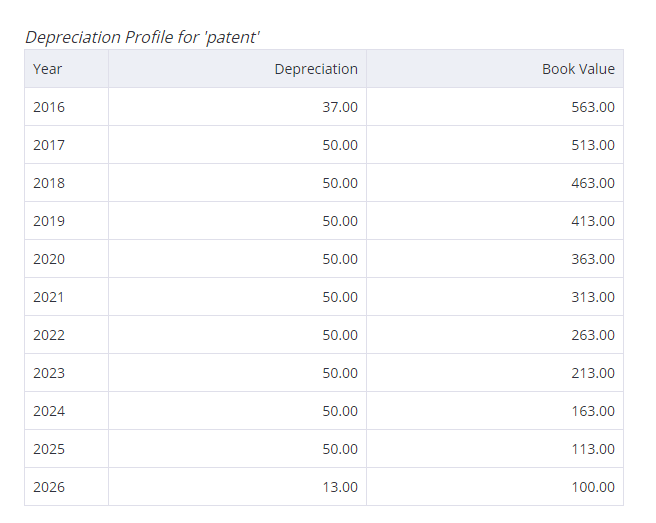Amortisation - What is amortisation?
Amortisation is a routine decrease in value of an intangible asset, or the process of paying off a debt over time through regular payments
Keep track of the value of your business assets with amortisation applied automatically through your accounting software. Try Debitoor free for 7 days.
Amortisation usually refers to the expensing of intangible capital assets (intellectual property: patents, trademarks, copyrights, etc.) in order to show their decrease in value as a result of use or the passage of time.
Decreasing value can be the result of consumption, expiration or obsolescence (when a newer model is released), for example.
Amortisation and assets
Amortisation is most commonly used to describe the routine decrease in value of an intangible asset.
A corresponding concept for tangible assets is known as depreciation. The idea of amortisation and depreciation is that the cost of an asset is spread over the period of time that it will be of use or its useful life.
If the full price of an asset were to be recognised in the period in which it was purchased, then that year’s expenditure would be overstated incorrectly while expenditures throughout the remaining years, which were still obtaining benefits from that asset, would not be affected and therefore would be understated.
Reasons for value depreciation
- Wear and tear: for example, a car decreases in value over time due to constant wear on the tires, paint job, or because of high mileage, weather damage, etc.
- Obsolescence: Assets frequently decrease in value as they are replaced by new and improved models. For example, a computer loses value if a newer, better model is released.
Impairment Loss
An impairment loss is a loss that represents a permanent decrease in the value of an asset.
Amortisation and loans
When used in the context of a loan, for example a small business or bank loan, amortisation refers to the repayment of the loan spread out over a series of payments based on a schedule. Initially, the payments mainly cover the interest charges but provides a schedule for total repayment.
Tracking amortisation with Debitoor
Determining and tracking depreciation of assets is simple with Debitoor. Asset amortisation is automatically calculated using the straight-line depreciation method once the estimated value is entered.
This depreciation calculation can be used for both tangible assets such as computer equipment, as well as on intangible assets such as patents.
A loan can be added in Debitoor by creating an additional bank account for the loan and entering a negative balance. This provides a more accurate overview of the financial standing of your business and allows you to keep accounts and payments organised.

<a class="link link--button link--primary" href="/sign-up" Get started with Debitoor
